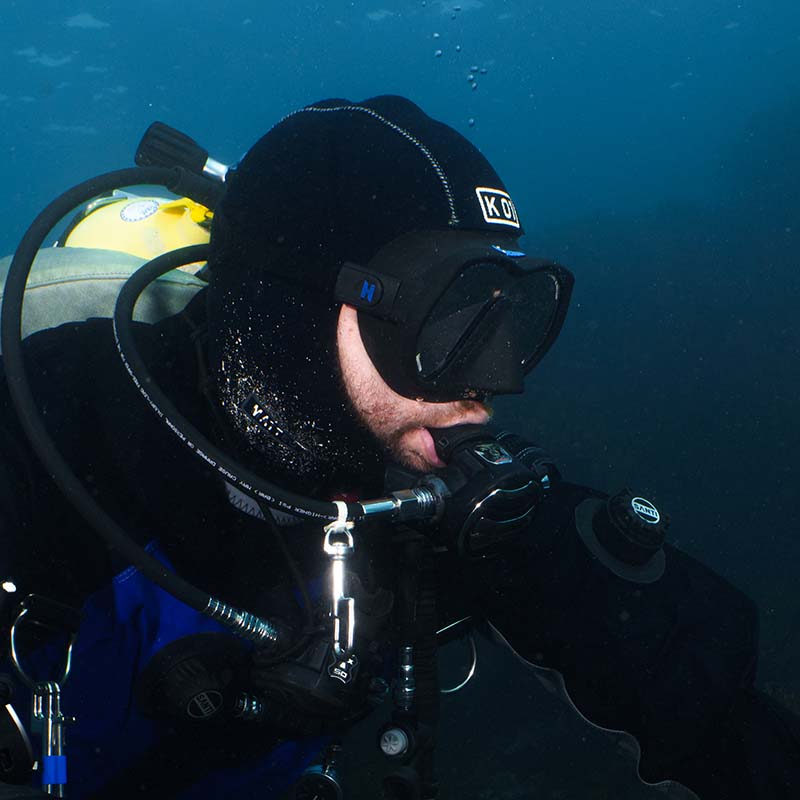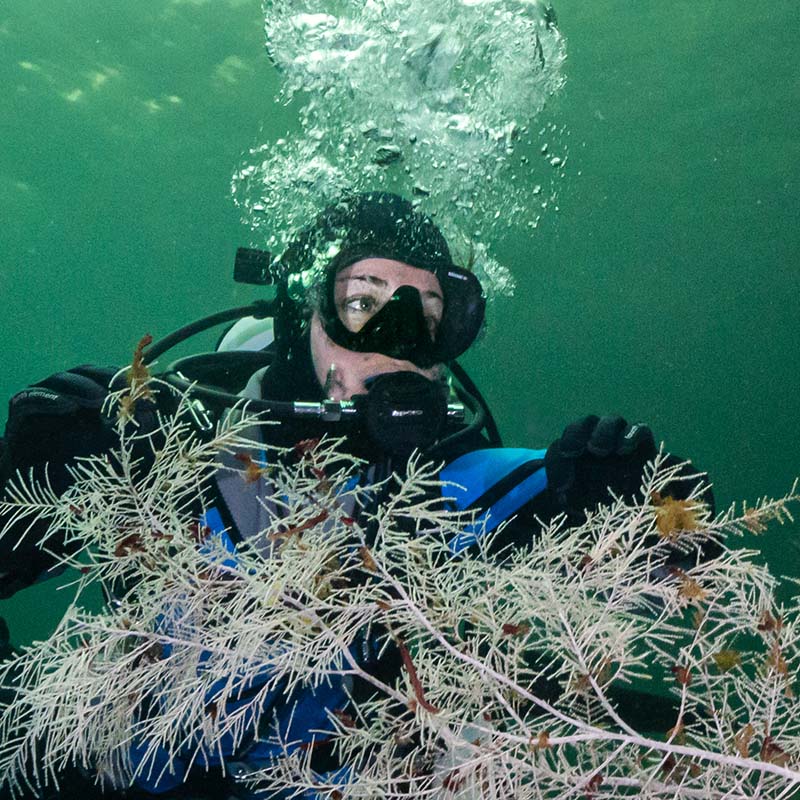TOOLS
We believe that 3D technologies could give an in-depth view of the underwater realm. For this reason, we implement tools that consider more than two dimensions, and are capable to acquire, analyze and simulate complex three-dimensional processes. Nevertheless, we love to engage and share this complexity in new dimensions and contexts.
Photogrammetry
Photogrammetry is a technique to retrieve three-dimensional data from images. We collect thousands of pictures to scan each tiny detail of the environment in conjunction with measures and coordinates. Using complex algorithms, we are able to create true-scale, georeferenced models, ready to be analysed or enjoyed on VR headsets. Photogrammetry represents the foundation of our methodology and the baseline for complex analysis.
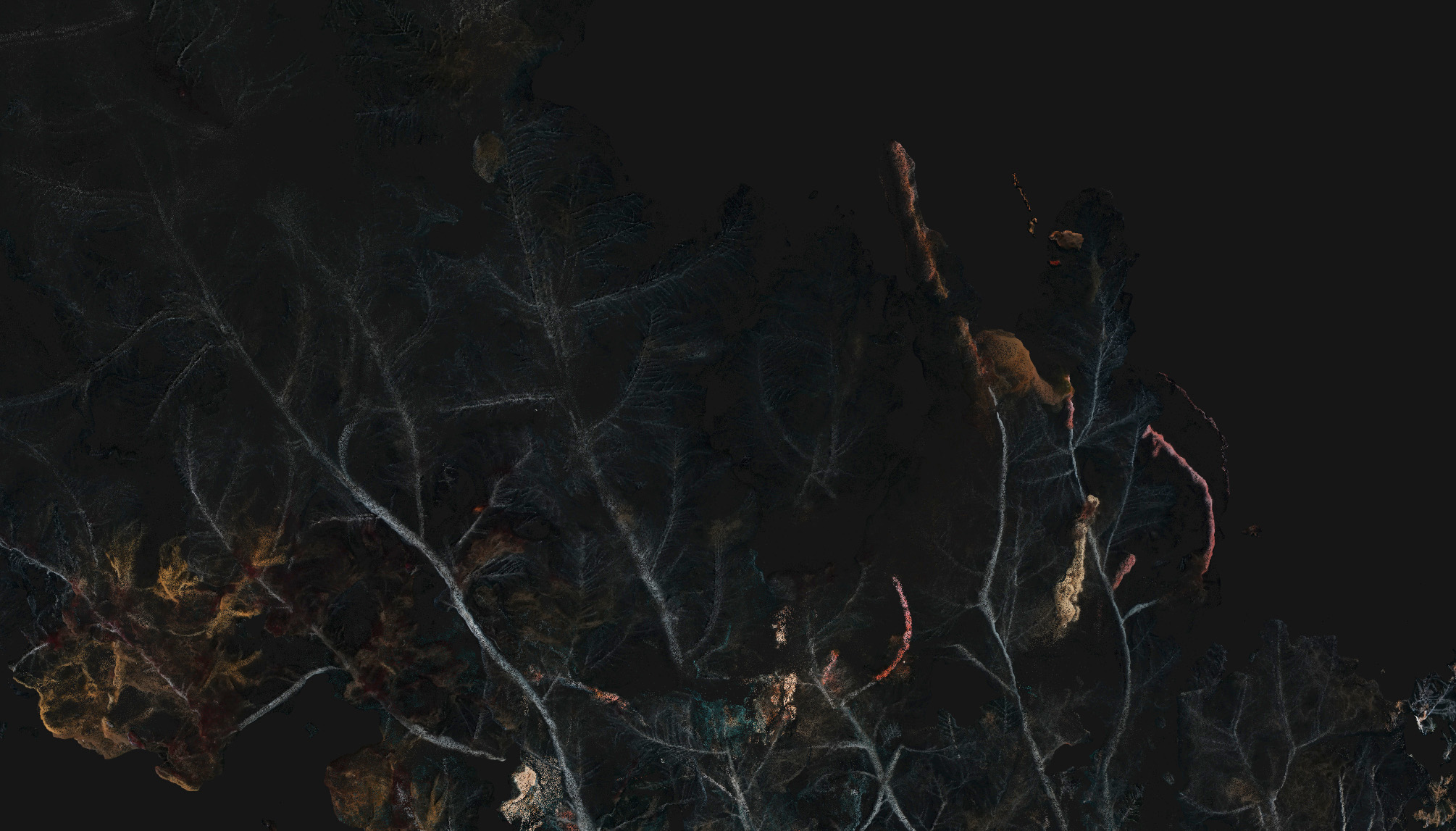
A draft alignmnet of the images acquired to scan an Antipathella fiordensis.
Modelling
3D models contain an enormous amount of information, sitting there just waiting to be explored. We use sophisticated software to analyse shapes, areas, volumes, and train AI algorithms to learn from the environment. Acquired 3D models are also great tools to understand how things changes. We employ procedurals tools to re-create complex habitats and biodiversity, to run simulations and virtual experiments.
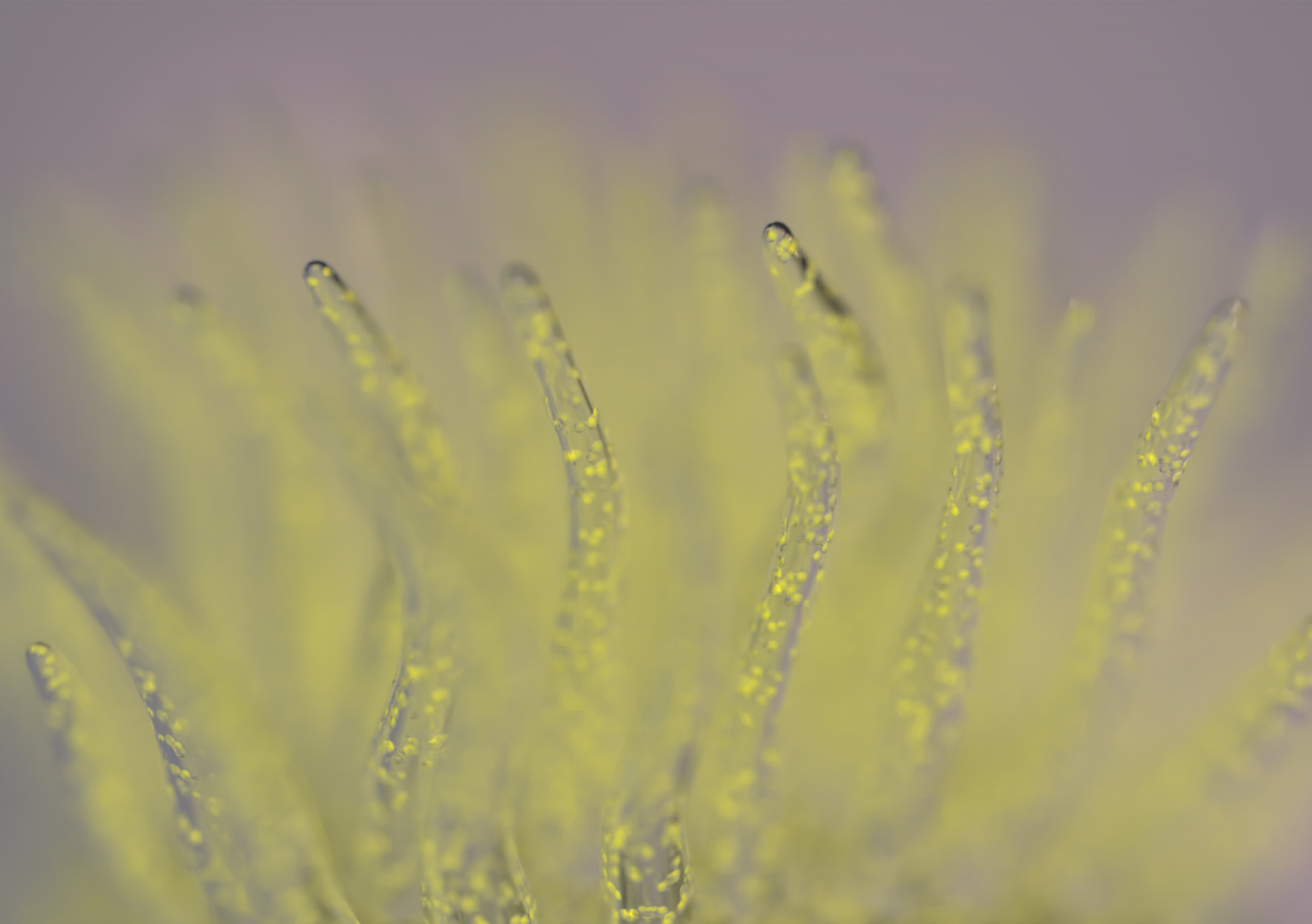
An example of a procedural model with procedural materials realized to model polyps in computer graphic.
Virtual Reality
Sharing what we see and learn underwater is a crucial part of our mission. Virtual Reality is the perfect tool to revise our data in new shapes, imaging past and future underwater scenarios, looking at things at different scales, embodying marine life or exploring unvisited environments. By employing game engines, we aim to create VR experiences to engage and share with others what we like the most: being underwater.
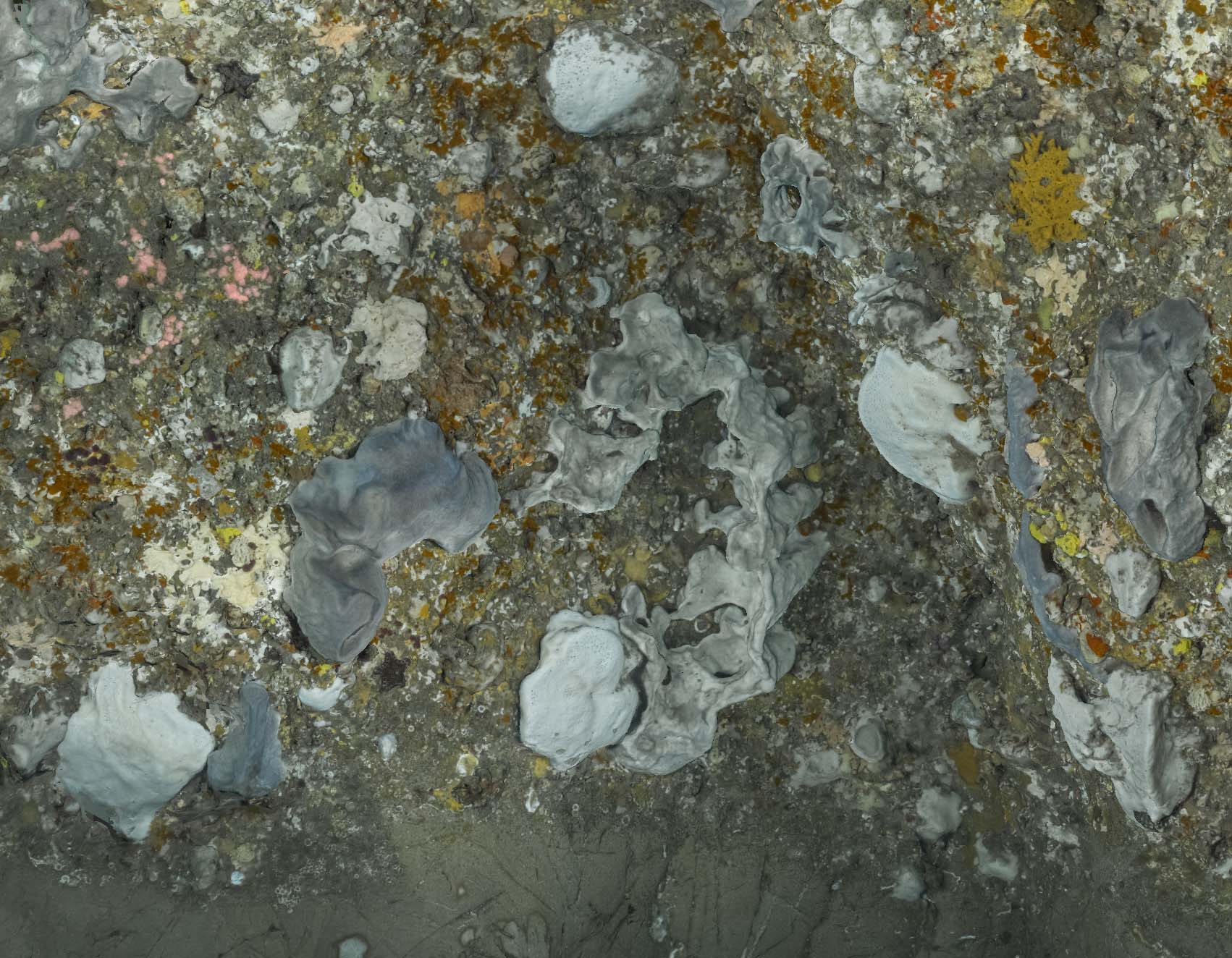
A finalized 3D model of a sponge wall, ready to be imported and explored in VR.
